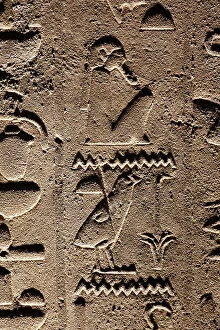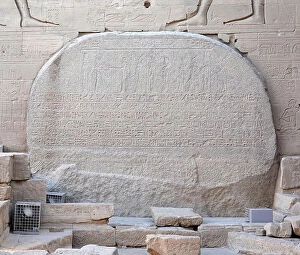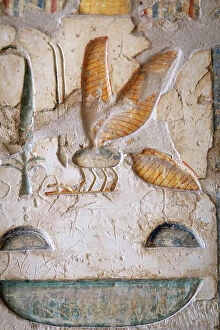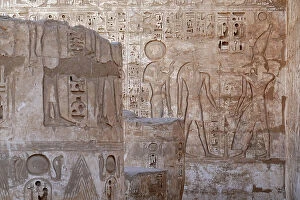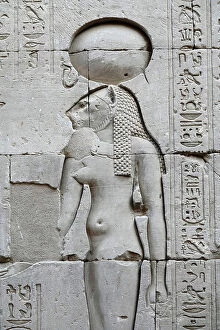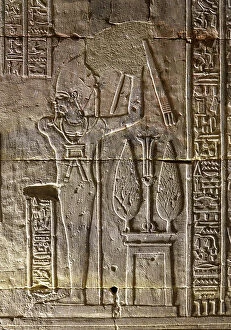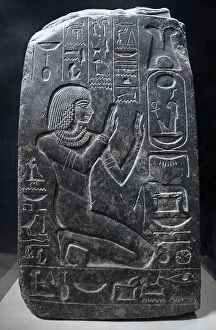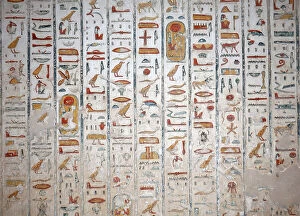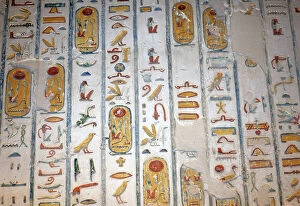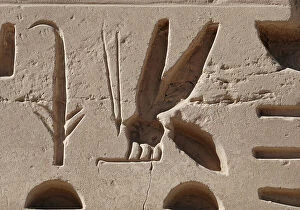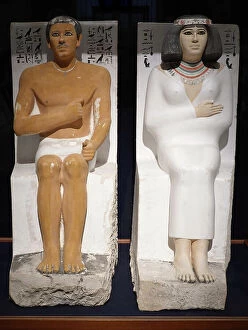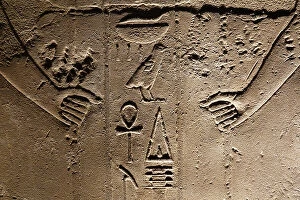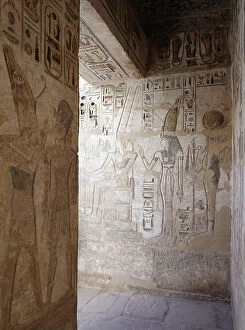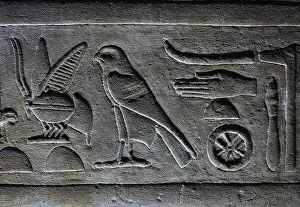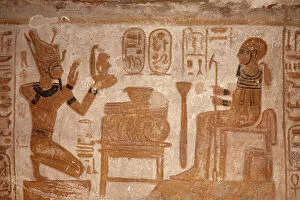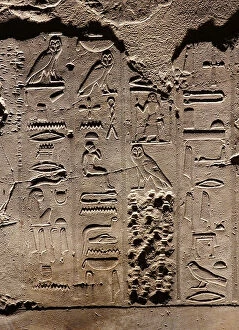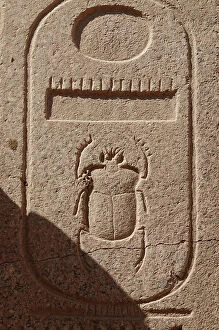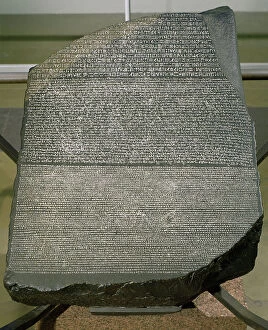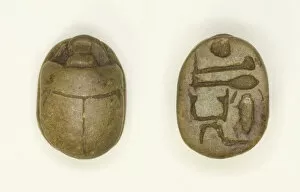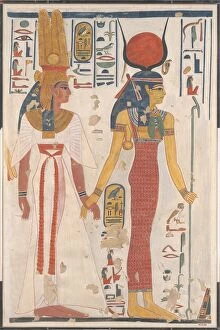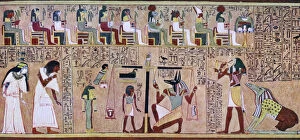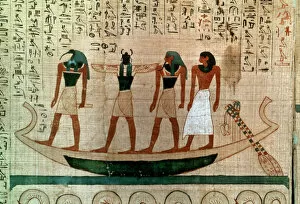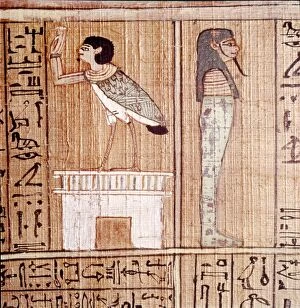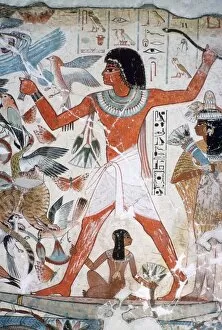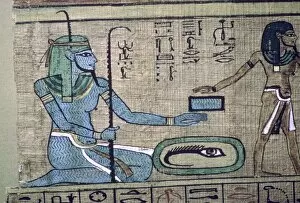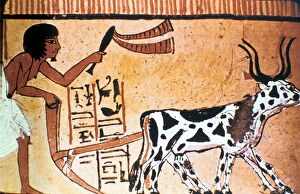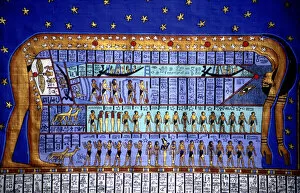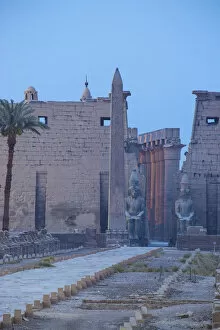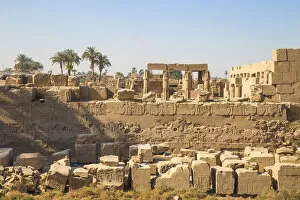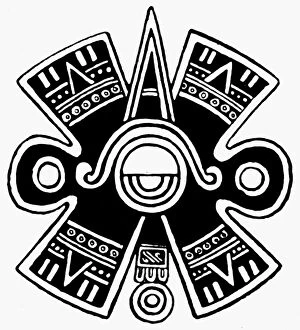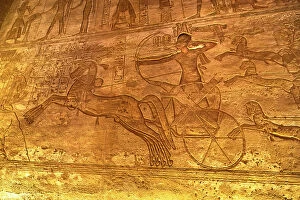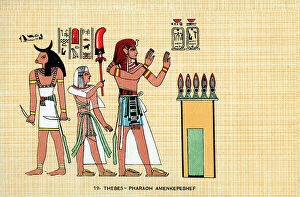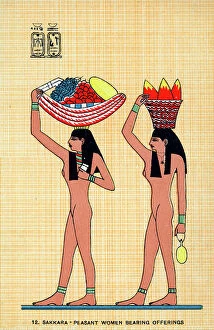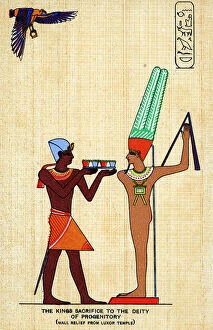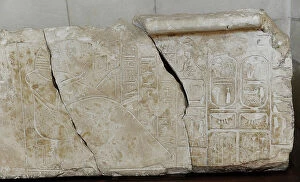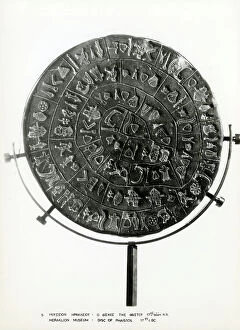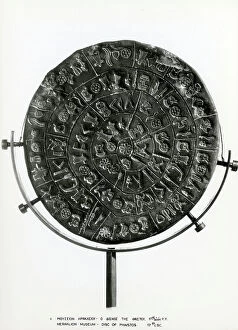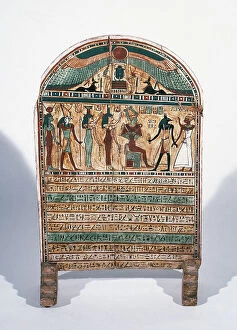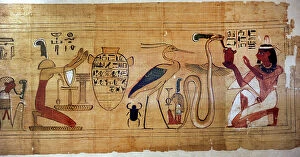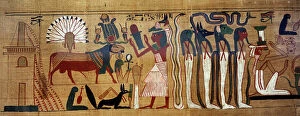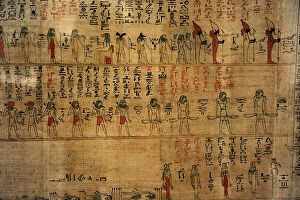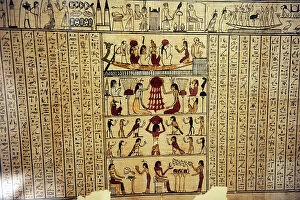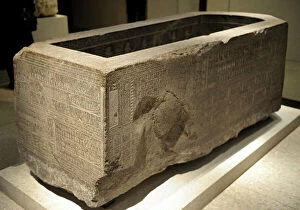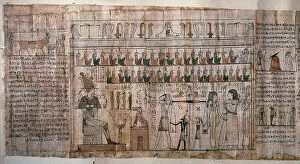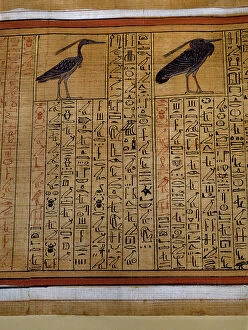Hieroglyphic Collection (page 3)
"Hieroglyphic: Unlocking the Ancient Egyptian Language" Step into the mesmerizing world of ancient Egypt through the intricate art of hieroglyphics
For sale as Licensed Images
Choose your image, Select your licence and Download the media
"Hieroglyphic: Unlocking the Ancient Egyptian Language" Step into the mesmerizing world of ancient Egypt through the intricate art of hieroglyphics. These fascinating symbols, carved and painted on temple walls, tombs, and artifacts, provide a window into the rich history and culture of this enigmatic civilization. Marvel at the relief depicting Akhenaten, Nefertiti, and their three daughters—a snapshot frozen in time that showcases their royal splendor. The attention to detail is awe-inspiring as you observe every delicate line etched onto stone. The Rosetta Stone stands as a testament to human curiosity and determination. This remarkable artifact became the key to deciphering hieroglyphics when it was discovered in 1799. Today, it resides in the British Museum in London—bridging continents and connecting us with our past. Pharaoh Amenhotep I's legacy lives on through his majestic tomb adorned with captivating hieroglyphs. As you stand before one of its double doors embellished with an image of Isis—the goddess of magic—you can almost feel her mystical presence. In Memphis, a relief carving brings forth Goddess Nephthys—an embodiment of beauty and power. Her graceful figure captivates all who gaze upon her divine form. Travel to Dendera where the Temple of Hathor awaits—a sanctuary dedicated to love and joy. Its walls are adorned with vibrant hieroglyphic paintings that depict scenes from daily life—a vivid portrayal of ancient Egyptian society. Enter Tutankhamun's tomb nestled within the Valley of Kings—an archaeological treasure trove filled with stunning wall paintings that narrate stories from his afterlife journey. Each brushstroke tells tales lost in time but preserved for eternity through these sacred symbols. The Eye of Horus symbolizes protection against evil forces—a powerful emblem found on false doors like Senenmut's grand entranceway into eternity—an everlasting tribute to his status as a revered noble.

